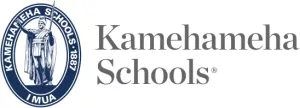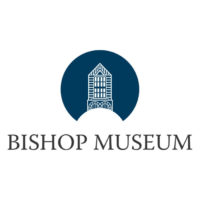Search By Repository
Search By Repository

State of Hawai‘i’s archives are nearly 70 photographs and other documents that detail the assistance provided by the Territory of Hawaiʻi. Photographs show that in 1937, territorial architect Harry Kaʻonohi Stewart was sent to the islands to help build new quarters for the colonists. Nearly twenty years later, incorporation documents note that a group called “Hui Panalaau” was formed whose purpose was “to preserve and perpetuate the association of those persons who took part in and contributed to the colonization of the Equatorial Islands … and to honor those who died while in the service of the United States of America as colonists of the Equatorial Islands of the Pacific.”
Kekāuluohi Building
‘Iolani Palace Grounds
364 S. King Street
Honolulu, Hawai‘i 96813
Phone: (808) 586-0329
e-mail: archives@hawaii.gov

ʻUluʻulu perpetuates and shares the rich moving image heritage of Hawaiʻi through the preservation of film and videotape related to the history and culture of Native Hawaiians and the people of Hawaiʻi. ʻUluʻulu is a Hawaiian word meaning collections, assembly, or gathering. The archive is not just a collection of moving image items, but also an assembly of voices, communities, and stories; a gathering place for people to share Hawaiʻi’s culture, traditions and collective memory.
University of Hawaiʻi, West Oahu ‘Ulu‘ulu Moving Images Archive, which has rare 1935 footage of the colonists on the islands.
UHWO Library First Floor
91-1001 Farrington Highway
Kapolei, HI 96707
phone: 808.689.2740
e-mail: uluulu@ hawaii.edu

By operating world-class Hawaiian schools and engaging with communities to transform educational systems, we will raise ‘ōiwi leaders who are empowered and unified, and who will solve the issues of our people and communities.
Within the archives of Kamehameha Schools in Honolulu, Hawai‘i, sits 2 ½ linear feet of correspondence, school newspapers, student diaries, and documents that reveal how a private school for Hawaiian children was drawn into this colonization project. A letter from H.A Meyer, an Army Infantry Captain who had overseen several of the expeditions, to Kamehameha Schools Trustee Albert F. Judd states: “Through your co-operation, we were able to secure the Hawaiian personnel of the expedition from the Kamehameha School for Boys. Six graduates were taken on the first expedition. In company with selected military personnel they were left in groups on each of the three islands… The duties performed by these men are severe. Neither I, nor any of the people associated with me, have any criticism of the performance of their duty. For their loyalty, I commend them most highly.” Over the course of seven years, more than fifty of the colonists were alumni or students of Kamehameha School.
Kamehameha Schools
567 South King Street
Honolulu, Hawai‘i 96813
Phone (808) 523-6200
Email: archives@ksbe.edu

Changing Lives through Higher Education
Founded in 1907, the University of Hawaiʻi System includes 3 universities, 7 community colleges and community-based learning centers across Hawaiʻi. As the state’s public system of higher education, UH offers opportunities as unique and diverse as our island home.
University of Hawaiʻi at Manoa Library’s Collection which contains maps, manuscripts and published articles in local newspapers and magazines that track the seven year history of the project, including President Roosevelt’s claiming of the islands and Amelia Earhart ill-fated flight.
2444 Dole Street
Honolulu, HI 96822

Bernice P. Bishop Museum (Bishop Museum) inspires our community and visitors through the exploration, celebration, and perpetuation of the extraordinary history, culture, and environment of Hawaiʻi and the Pacific.
Bishop Museum Library & Archives has one of the richest and most varied collections of published works and primary source materials related to Hawaiʻi and the Pacific. Our Library holdings include rare books, periodicals, newspapers, and special collections of published material. The Museum’s Archives hold the results of extensive studies done by Museum staff in various disciplines throughout the Pacific, as well diverse and important collections of manuscripts, photographs, artwork, oral histories, sound recordings, and maps.
1525 Bernice Street, Honolulu, Hawaiʻi 96817
Phone: (808) 847-3511
Email: archives@bishopmuseum.org
Bishop Museum
1525 Bernice Street
Honolulu, HI 96817

University of Hawaiʻi at Manoa Center for Oral History, which has a nearly 300 page transcription of interviews of eight of the colonists recorded in 2006, including two of the last colonists who were rescued from the islands in 1942. Both men bore witness to the tragic end of the project, as two young Hawaiians, Joseph Keli‘ihananui and Richard Whaley, were killed on Howland Island in a Japanese air raid the day after Pearl Harbor was bombed. For their sacrifices, Secretary of the Department of Interior Harold L. Ickes sent letters of condolences to each family, writing that “in your bereavement it must be considerable satisfaction to know your brother died in the service of his country.”

The National Archives in College Park, MD has fifteen boxes that reveal a once secret project. Found within the holdings of the Department of Air Commerce, the Department of the Interior, the Civil Aeronautics Administration, the Navy Department, and the Coast Guard, are documents that tell the story of young men, mostly Native Hawaiians, who were recruited by the federal government to occupy remote islands in the Equatorial Pacific. Wrote the Director of Air Commerce to the Secretary of Commerce in a confidential 1935 memorandum, “The Navy Department advises that Navy personnel cannot be used to inhabit Baker, [Howland], and Jarvis Islands. It is, therefore, suggested that native Hawaiians be used for this purpose.” A little over a month later, in a confidential letter, Coast Guard Commandant and Rear Admiral H. G. Hamlet notes that “a mission, to convey certain people and material to [the islands] has been authorized by the President of the United States.”
